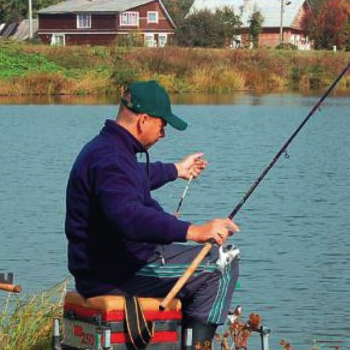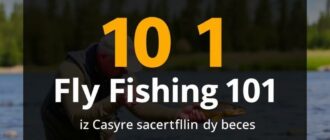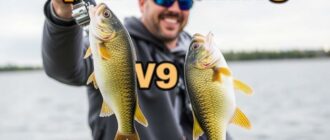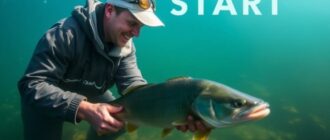- Spring Fishing Techniques: Awakening the Waters
- Spring Fishing Tips: What Works Best?
- Ideal Species to Target in Spring
- Summer Fishing Techniques: Beating the Heat
- Summer Tips for Optimal Catch Rates
- Top Summer Fish Species and Techniques
- Fall Fishing Techniques: Preparing for Winter
- Fall Fishing Must-Knows
- Popular Fall Targets and Methods
- Winter Fishing Techniques: Cold Weather Angling
- Winter Fishing Essentials
- Common Winter Fishing Species and Approaches
- Seasonal Fishing Gear and Tackle Adjustments
- Additional Tips for Year-Round Fishing Success
- Conclusion
Fishing is one of those timeless outdoor activities that connects us with nature and offers both excitement and relaxation. But did you know that the best fishing techniques change dramatically with the seasons? To be a successful angler throughout the year, understanding how fish behavior shifts with temperature, weather, and daylight is crucial. Whether you’re casting a line in spring, summer, fall, or winter, adapting your approach can mean the difference between a basket full of fish and a day spent waiting for a nibble.
In this comprehensive guide, we’ll explore the best fishing techniques for every season, breaking down what works, when, and where. You’ll learn how water temperature affects fish activity, the best lures and bait to use in different months, and some pro tips to maximize your catch all year. So grab your gear, and let’s dive into the world of seasonal fishing success!
Spring Fishing Techniques: Awakening the Waters
Spring is a time of renewal—not just for the environment but for fish activity as well. As water temperatures start to rise, fish begin moving toward shallower waters to spawn. This increased movement makes spring one of the most exciting seasons for anglers.
During spring fishing, the key is to focus on transitional zones where fish are easily found. Shallow flats, river mouths, and warming bays all become prime spots. Because fish are hungry after their spawning cycle, they often respond well to lively presentations. Using live bait such as worms, minnows, or leeches is highly effective in spring. Additionally, spinnerbaits and soft plastics that mimic small prey can attract aggressive strikes.
Spring Fishing Tips: What Works Best?
- Target warm, shallow waters where fish gather to spawn.
- Use live bait like minnows or nightcrawlers for natural attraction.
- Try spinnerbaits and soft plastics to imitate baitfish.
- Fish during warmer parts of the day to take advantage of fish activity.
Ideal Species to Target in Spring
| Species | Preferred Bait/Lure | Best Location |
|---|---|---|
| Largemouth Bass | Spinnerbaits, Worms | Weedy Shallow Bays |
| Trout | Live Minnows, Soft Plastics | Cold, Oxygenated Streams |
| Crappie | Jigs, Live Minnows | Near Submerged Structure |
Summer Fishing Techniques: Beating the Heat
Summer brings longer days, warmer water, and unfortunately, more cautious fish. Many species retreat to deeper, cooler waters to avoid the heat, making them less accessible to shallow-water anglers. Yet, summer fishing offers unique opportunities if you adjust your techniques.
In the hottest months, patience and stealth pay off. Early morning and late evening are often the best times to fish, as fish become more active in cooler, low-light conditions. Using light lines and smaller, more natural lures can entice finicky fish that have grown wary after the spring and early summer feeding frenzy.
Summer Tips for Optimal Catch Rates
- Fish deeper waters during midday when fish seek cool refuge.
- Use smaller lures or live bait to imitate natural food sources.
- Explore shaded areas, under docks, or near submerged vegetation.
- Try trolling or slow presentations for species like salmon or walleye.
Top Summer Fish Species and Techniques
| Species | Preferred Technique | Best Time and Place |
|---|---|---|
| Walleye | Trolling with Crankbaits | Dusk and Dawn in Deep Waters |
| Smallmouth Bass | Jigs and Soft Plastics | Rocky Structure, Late Afternoon |
| Salmon | Downriggers and Spoons | Open Cold Lakes, Early Morning |
Fall Fishing Techniques: Preparing for Winter
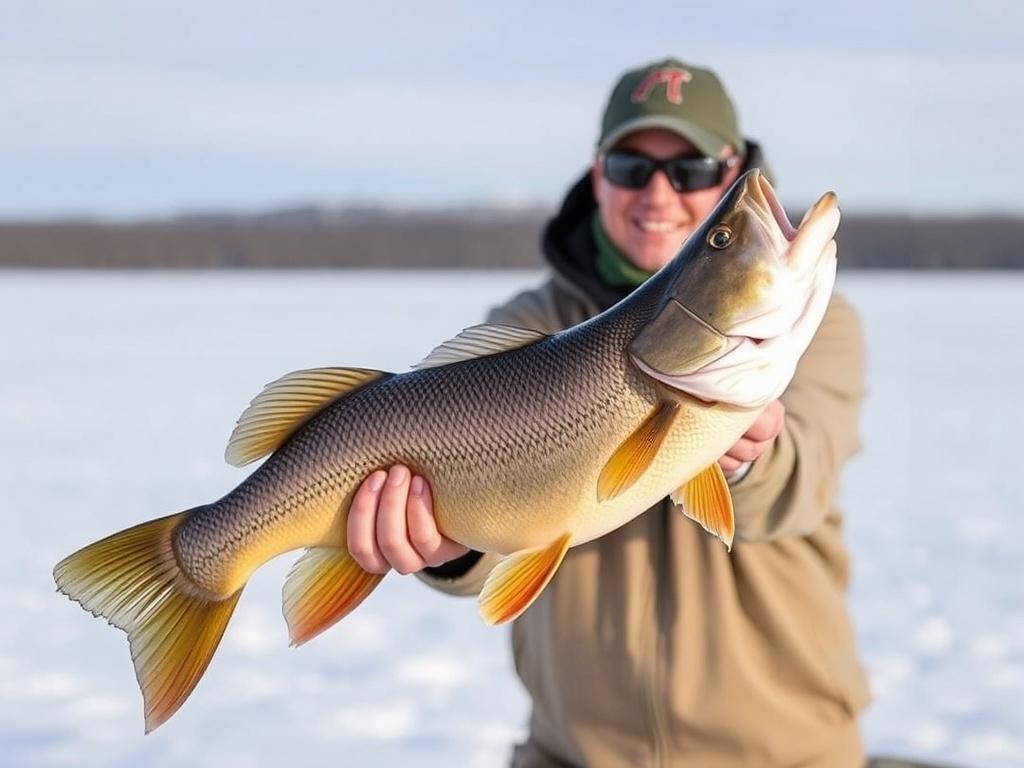
Autumn signals a turning point in the fishing calendar as fish bulk up for winter. Cooler water triggers fish to feed more aggressively, making fall a fantastic season for anglers to rack up some memorable catches. One of the best things about fall fishing is that fish tend to be active throughout the day, not just in early or late hours.
Using bright-colored lures in fall can be very effective, as fish are preparing for colder months and are less likely to be picky. Additionally, casting or trolling near drop-offs and deeper water areas is excellent since fish congregate to feed before winter hibernation.
Fall Fishing Must-Knows
- Target feeding hotspots like drop-offs and weed edges.
- Use faster retrieves to trigger reaction strikes.
- Bright colored lures such as orange and chartreuse work well.
- Don’t shy away from fishing midday when fish are actively feeding.
Popular Fall Targets and Methods
| Species | Recommended Lure/Bait | Fishing Strategy |
|---|---|---|
| Brown Trout | Crankbaits, Spinners | Cast Near Stream Pools and Deeper Runs |
| Northern Pike | Spoons and Large Jigs | Near Shallow Vegetated Areas |
| Striped Bass | plugs and Soft Plastics | Along River Mouths and Coastal Areas |
Winter Fishing Techniques: Cold Weather Angling
Winter fishing requires special preparation, patience, and the right techniques to be successful. Many fish species slow down in cold water, making them less active and feeding less often. Ice fishing also becomes a popular method where conditions allow it. However, despite the challenges, winter can be an extremely rewarding time to fish.
One key to winter success is to fish deeper water where fish concentrate. Slow, subtle presentations work best since fish conserve energy. Live bait often outperforms artificial lures during cold months, but certain jigs and spoons designed for ice or cold water fishing can also entice strikes.
Winter Fishing Essentials
- Focus on deep holes and underwater structures where fish gather.
- Use slow retrieves and small, subtle lures.
- Live bait such as wax worms or minnows is highly effective.
- Respect safety precautions if ice fishing — check ice thickness diligently.
Common Winter Fishing Species and Approaches
| Species | Best Bait/Lure | Fishing Environment |
|---|---|---|
| Walleye | Jigs tipped with Minnows | Deep Lakes and River Pools |
| Perch | Small Jigs, Wax Worms | Ice Fishing Through Snow-Covered Lakes |
| Lake Trout | Downriggers and Spoons | Deep Water in Cold Lakes |
Seasonal Fishing Gear and Tackle Adjustments
Adjusting your tackle and gear is just as important as changing techniques with the seasons. Here’s a quick rundown of recommended setups to complement each season’s approach:
| Season | Rod & Reel | Line Type & Strength | Lures & Baits |
|---|---|---|---|
| Spring | Medium Action Spinning Rod | 8-12 lb Monofilament or Fluorocarbon | Spinnerbaits, Live Bait (Worms) |
| Summer | Medium-Heavy Baitcasting Rod | 10-15 lb Fluorocarbon | Crankbaits, Soft Plastics |
| Fall | Medium-Heavy Spinning or Baitcasting | 12-15 lb Braided Line | Bright Colored Jigs, Crankbaits |
| Winter | Ice Fishing Rod or Ultralight Spinning | 4-8 lb Monofilament or Fluorocarbon | Jigs tipped with Wax Worms or Minnows |
Additional Tips for Year-Round Fishing Success
Learning to read the water, observe weather patterns, and understand fish behavior beyond just the seasonal changes can elevate your fishing game significantly. Here are some extra pointers to keep in mind for fishing throughout the year:
- Always check local fishing regulations and seasons to stay legal and sustainable.
- Match your bait and lure size with local forage to appear more natural to fish.
- Adjust your fishing times to periods of high activity, often dawn and dusk.
- Keep a fishing journal to track what works best in different conditions.
- Stay patient and adaptable — sometimes changing one factor makes all the difference.
Conclusion
Fishing throughout the year offers a unique blend of challenges and rewards as each season demands a different approach to connect successfully with fish. From targeting spawning bass in the warming waters of spring to slowly teasing walleye beneath the ice in winter, embracing the best fishing techniques for every season makes your outdoor pursuits more fruitful and enjoyable. By understanding how fish behavior shifts with changes in temperature, habitat, and daylight, and by selecting appropriate gear, bait, and timing, you’ll maximize your chances of landing that memorable catch no matter when you fish. So whether you’re a beginner or seasoned angler, take the time to tune into the rhythms of nature and watch your fishing adventures thrive all year long.
Как вам статья?
